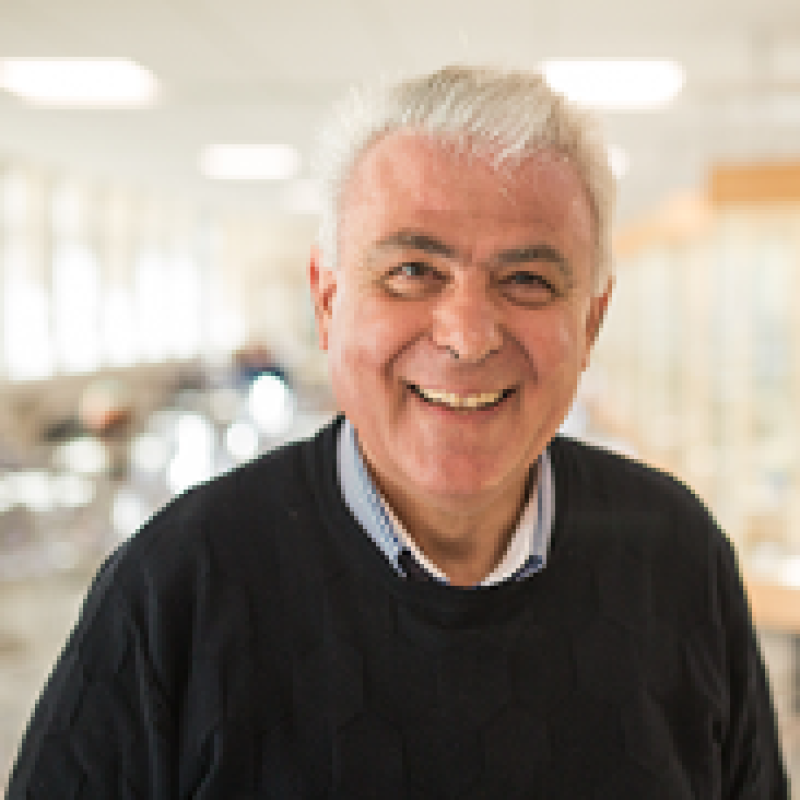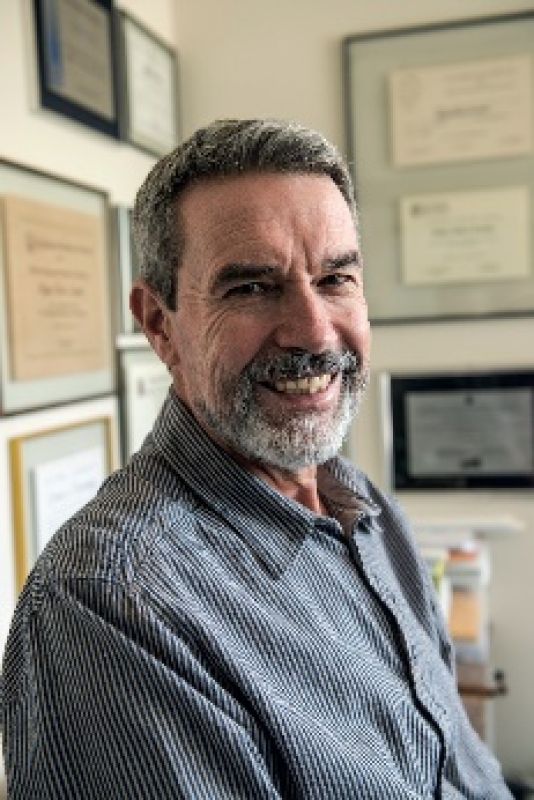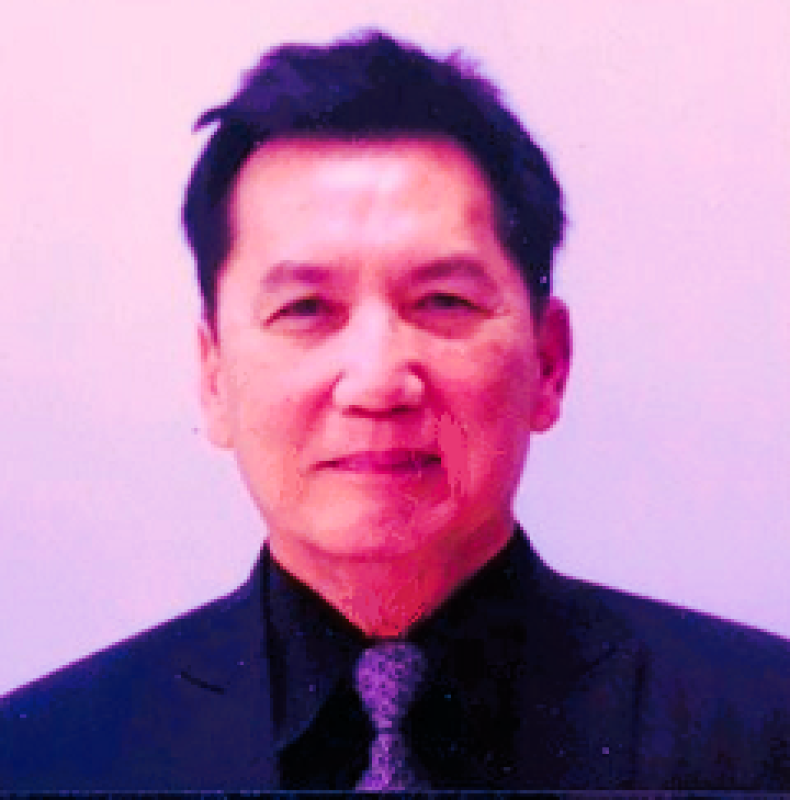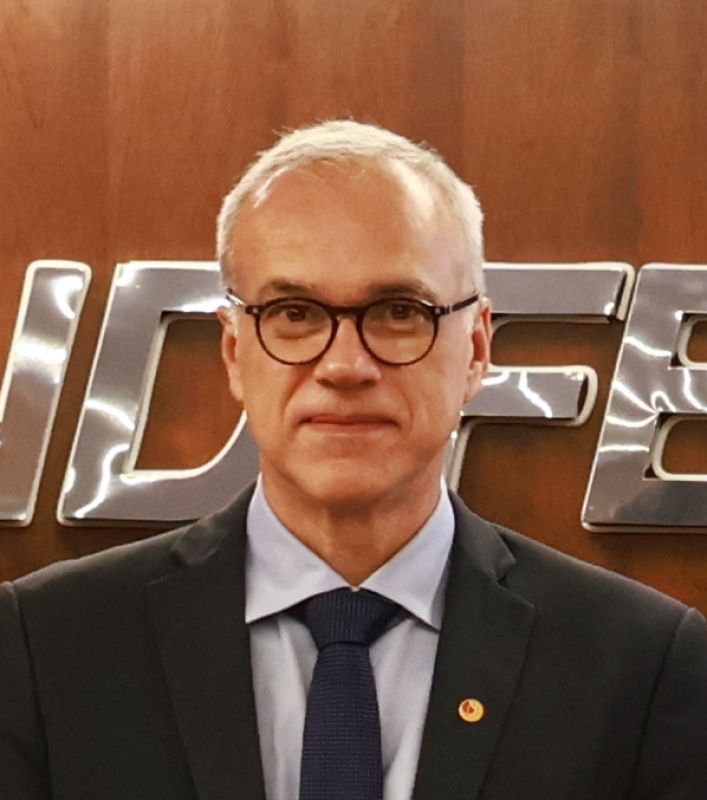Plenárias
 |
Panos Tsakiropoulos University of Sheffield Design and development of refractory metal intermetallic composites, refractory high entropy and refractory complex concentrated alloys |
|
Metallic ultra-high temperature materials (UHTMs) that could replace Ni-based superalloys in a “beyond nickel superalloys era” could be refractory metal (RM) intermetallic composites (RMICs), RM high entropy alloys (RHEAs) or RM complex concentrated alloys (RCCAs). In aerofoil applications in aeroengines, the new materials will be used as part of an ultra-high temperature material system comprising a metallic UHTM substrate plus an environmental coating system. The metallic substrate should have “adequate” resistance to oxidation and interstitial contamination, and the environmental coating should also “protect” the substrate from interstitial contamination. It is important to know how individual phases in a metallic UHTM are contaminated. Such knowledge is essential for the design, development and in-service life of the material. Current research is focussing on substrate metallic UHTMs, in particular on A2 solid solution RHEAs or RCCAs, or (i) on multiphase RHEAs and RCCAs with A2+B2 two-phase microstructure, or (ii) on RMICs, RHEAs and RCCAs with microstructures that consist of intermetallics such as silicides, aluminides, Laves phases and A15 compounds with/without A2 solid solution(s). Research focussing on material systems for a “beyond nickel superalloys era”, though essential, is still in its infancy. The constituent phases in the aforementioned multiphase metallic UHTMs can be “conventional” or high entropy (HE) or complex concentrated/compositionally complex (CC). In other words, HE and/or CC phases can co-exist with “conventional” phases and vice versa in these materials. Furthermore, depending on their location in the microstructure, the said phases can be contaminated with interstitials, some more severely than others, in particular A2 solid solution(s). The presentation will discuss the design of metallic ultra-high temperature systems and challenges for the metallurgical/materials science communities. The use of “alloy design landscapes” will be considered, and processing-microstructure-property relationships will be used to highlight the development of metallic UHTMs. New data for processing, microstructures and properties of contaminated with interstitials and uncontaminated phases will be presented and discussed. Emphasis will be given on the use of Nb in these materials, as the speaker considers Nb to be the “Brazilian element”. |
|
 |
Edvani Curti Muniz Universidade Federal do Piauí Materiais poliméricos incluindo nanofibras eletrofiadas e suas aplicações tecnológicas |
|
Nesta palestra serão apresentados alguns resultados recentes obtidos nos últimos 5 anos em nossos grupos de pesquisa, no desenvolvimento de materiais poliméricos com potencial aplicação nas áreas médica, farmacêutica e de engenharia de tecidos. Os materiais são principalmente aqueles relacionados a biomateriais poliméricos, visando: i) a liberação controlada de fármacos; ii) ação bactericida; iii) substratos para crescimento celular; materiais com ação virucida para combate ao vírus SARS-Cov 2, relacionado à recente pandemia de coronavírus, e para cicatrização de feridas. Os materiais poliméricos que serão apresentados são preparados principalmente através de matrizes tridimensionais (hidrogéis) obtidas a partir da formação de complexos polieletrólitos entre polímeros aniônicos / catiônicos de polissacarídeos quimicamente modificados (ou não) e através da técnica de eletrofiação. Serão mostradas e discutidas diversas metodologias para obtenção de matrizes de diferentes geometrias (cilíndricas, esféricas, partículas irregulares, filmes finos, nanofibras e etc.) de diferentes tamanhos (escalas macro, micro e nanométricas). |
|
 |
Leonardo Simon University of Waterloo Opportunities and challenges for polysaccharides in materials sciences and engineering – a chance to decarbonization |
|
Polymers, resins, blends, and composites are increasingly important materials to support advances in energy, medical, food, transportation, and information technology. These fields have relied on non-renewable feedstocks contributing to greenhouse gases and other types of undesirable environmental impact. This presentation will discuss efforts to shift from a non-renewable petrochemical feedstock to alternative renewable feedstock that can contribute to decarbonization because renewable feedstock has a negative carbon footprint. Our previous research demonstrated that biomass (wheat straw) originating as a byproduct of food production can be a desirable source of renewable materials. While this is incredibly positive to reduce carbon footprint, there are other materials streams in agriculture that are undervalued or treated as waste. This creates an opportunity for discovery that will transform those undervalued streams into high-valued products. More recent research in our group has addressed several types of polysaccharides: starch, cellulose and alfa-glucan. Although some of these materials have been known and used for a long time like starch and cellulose, novel technologies are being created to use nanoparticles of starch or cellulose; whereas alfa-glucan is a new material. The goal is to discover new strategies to enable these undervalued streams to be utilized in manufacturing vehicles, flexible electronics, batteries, or packaging for food for example. This presentation will discuss several cases of the utilization of nanostarch, nanocellulose and alfa-glucan in combination with other polymers. It will also discuss the role of universities in collaborations with industry to accelerate the commercialization of new technologies. |
|
|
|
Nguyen Minh The University of California San Diego Materials engineering and science in the development of solid oxide cell technology for power generation and hydrogen production |
|
Solid oxide cell (SOC) technology is currently under development for clean and efficient power generation and hydrogen production. A SOC, a high-temperature (600 ºC -1000 ºC), all-solid-state cell, consists of a fully-dense ion-conducting oxide electrolyte sandwiched between two porous electrodes (an anode and a cathode). The cell, when operating in power generation or fuel cell mode (referred to as solid oxide fuel cell or SOFC) generates electricity by electrochemically combining a fuel (e.g., hydrogen, hydrocarbons, alcohols) with air across the oxide electrolyte and when operating in electrolysis mode (referred to as solid oxide electrolysis cell or SOEC), electrochemically splits a gaseous feed (e.g., steam) across the electrolyte to produce hydrogen (and oxygen). Any SOC cell designed for and manufactured from a selected set of materials must have desired physical, mechanical, chemical, electrical and electrochemical properties and characteristics set by the operating requirements of the intended application. At present, the most common materials for the SOC are yttria-stabilized zirconia (YSZ) for the electrolyte, nickel (Ni)/YSZ for the hydrogen electrode (anode in fuel cell mode or cathode in electrolysis mode) and perovskite oxide such as strontium-doped lanthanum strontium cobaltite perovskite (LSC) for the oxygen electrode (cathode in fuel cell mode or anode in electrolysis mode). These materials have been formed into desired cell structures by conventional fabrication processes such as tape casting and screen printing. This paper discusses certain material science and engineering advancements in the manufacture and the performance, reliability and cost of the SOC. Selected examples include development of a process based on sputtering for the manufacture of thin-film SOCs with improved operating characteristics and reduced cost, exsolved nickel hydrogen electrodes for increased performance and durability, and 3D Ni/YSZ hydrogen electrode supports for redox (reduction-oxidation) resistance to enhance cell reliability. |
|
 |
Marjorie Olivier Université de Mons Duplex coatings: PEO layers sealed by optimized / modified hybrid sol-gel for corrosion protection of light alloys |
|
In the key economic sector of transport, a major lever for limiting greenhouse gas emissions while reducing the consumption of fossil fuels is to promote the use of lightweight, recyclable and high-performance materials. Aluminium and magnesium alloys meet these requirements, thanks to their low density and satisfactory compromise between mechanical strength and formability. Nevertheless, the alloys, whether cast or not, remain unusable for the severe applications for which they are intended, because they have low resistance to corrosion and wear. Although the use of copper results in notable improvements in the mechanical properties of aluminum alloys used in the aerospace industry, it presents some challenges, due to the galvanic corrosion with Al matrix in an aggressive electrolyte, resulting in the localized corrosion phenomenon. Magnesium alloys can be used as resorbable implants for biomedical applications but their high susceptibility to corrosion in body fluids must be compensated by active and protective coatings. During recent decades, various surface treatments, such as conversion coatings, anodization, and PEO, have been employed to enhance the corrosion resistance properties of light alloys. Among these techniques, PEO plays a crucial role thanks to its eco-friendly properties along with producing dense, hard, and thick ceramic coatings on light alloys. During the process, a ceramic coating with improved corrosion resistance, hardness, and wear properties is obtained. Since the porous structure provides diffusion pathways for any aggressive electrolytes to access the substrate, the idea of pore-filling by a sol-gel coating is a promising strategy to enhance the life service of PEO coatings. This idea originated from the fact that the porous structure of the PEO coating can be considered bricks of a wall that is going to be strengthened with a cement-like material like a sol-gel. Sol-gel process is a facile and inexpensive method that is environmentally safe and can produce a reliable protective layer. The performance of a sol-gel coating can be adjusted by solution pH, aging, additives, type of solvent, and particularly the type of sol-gel precursors that play a leading role in its performance. In this talk, duplex coatings: PEO layers sealed by optimized / modified hybrid sol-gel for corrosion protection of light alloys for biomedical and transport applications will be discussed with a special focus on the effect of the PEO electrical parameters, the nature of the substrate and the electrolyte, the sol-gel formulation and the active properties. |
|
|
|
Antonio Gomes de Souza Filho Universidade Federal do Ceará 2D materials under high pressures: strain transfer, adhesion and synthesis of novel structures |
| Raman spectroscopy is a versatile nondestructive tool widely used to characterize two-dimensional (2D) systems such as graphene and MoS2, among others. Since electrons and phonons are specially coupled to each other due to the reduced dimensionality, this technique provides detailed information about the structure and electronic properties of these layered systems thus allowing one to probe in the phonon spectra many features such as the numbers of layers and their interactions with the environment. Most of these 2D materials are sitting on substrate and the understanding on how the substrate affects the physical properties of these atomic thickness layers is a key point for fully characterizing and understanding the materials as well as exploiting them in different applications. In this regard, strain is an important variable to consider because the adhesion of the 2D material, which is basically the surface, depends on the nature of the substrate. One key question is how the strain is transferred from the substrate to the 2D material. The use of hydrostatic pressure has been an effective method to modulate the interactions between the 2D materials with substrates and environment and Raman spectroscopy has been important for investigating these strained 2D nanomaterials because the Raman cross section for these systems is very large, even for a single layer. In this talk, we discuss results obtained using high-pressure Raman studies of graphene and MoS2 sitting on different substrates. Depending on the pressure transmitting medium, number of layers, and compressibility of the substrate, the analysis of the Raman modes tells us how the stress is transferred from the substrate to the 2D material, thus allowing us to propose a model for studying the adhesion of the 2D systems by using high-pressure Raman technique. We also present the synthesis of novel 2D nanostructures under high-pressure conditions. | |
 |
Edgar Dutra Zanotto
Universidade Federal de São Carlos
Crystallization dynamics in metals, polymers, and ceramics: Bridging theory and experiment in materials science |
|
Crystallization is a fundamental process in natural phenomena (e.g., snow and mineral formation) and engineered applications, such as metal solidification and glass-ceramic production. Understanding the crystallization dynamics is crucial for controlling material microstructure and properties, whether the goal is to promote or prevent crystal formation. While crystallization is the antithesis of vitrification, controlled nano or micro-crystallization enables the creation of valuable polycrystalline materials, including special metallic alloys and glass-ceramics. This dual role in materials science makes “crystallization” one of the most frequently cited concepts in the field. This presentation focuses on recent advancements in understanding the early stages of crystallization, particularly crystal nucleation in supercooled liquids. We will examine the progress made over the past seven decades, supplemented by short videos to illustrate key concepts. The Classical Nucleation Theory (CNT), which has been the primary tool for analyzing crystallization dynamics for over 70 years, has shown limitations. Experimental data reveals significant discrepancies between CNT predictions and measured nucleation rates across various substances, including metallic, organic, and oxide materials. However, recent molecular dynamics simulations using simplified models (e.g., Lennard-Jones, BaS, ZnSe, Ge, Ni, and H2O) have provided validation for CNT, offering new insights into this complex yet fundamental process.
|
|
|
|
José Daniel Diniz Melo Universidade Federal do Rio Grande do Norte Oportunidades de simplificação de projeto e fabricação de estruturas de laminados compósitos |
|
Uma importante vantagem dos materiais compósitos para estruturas é a possibilidade de adequar as propriedades do material às necessidades de projeto para uma aplicação específica. No entanto, as abordagens tradicionais de projeto de estruturas compósitas laminadas seguem um conjunto de "regras de ouro", como a necessidade de lâminas em cada uma das direções de 0°, +45°, -45° e 90°, com um mínimo de 10% das lâminas em cada direção, laminados balanceados (lâminas em ângulos diferentes de 0° e 90° em pares (±) para eliminar o acoplamento de extensão-cisalhamento) e laminados simétricos em relação ao seu plano médio para eliminar o acoplamento de extensão-flexão e prevenir instabilidades dimensionais estruturais, como flambagem e distorção causada por alterações ambientais. Essas regras limitam a flexibilidade de projeto proporcionada pelos materiais compósitos. Neste sentido, uma abordagem com foco na simplificação de projeto e fabricação de estruturas de compósitos e na ampliação da flexibilidade de projeto é discutida nesta apresentação. Conceitos de lâmina mestra, homogeneização e critério de falha do círculo unitário são apresentados. Oportunidades de otimização de perfil de componentes e de ângulos das fibras oferecidas por layups não tradicionais - como laminados double-double ([±teta/±psi] - são discutidas. |
|
|
|
Luiz Antonio Pessan
Universidade Federal de São Carlos
Additive manufacturing for electromagnetic compatibility development and enhancement of polymer nanocomposites with carbon-based fillers |
| This lecture will address the cutting-edge development of polymer nanocomposites enhanced with carbon-based fillers designed for additive manufacturing (AM) and electromagnetic compatibility (EMC) applications. Focusing on recent advances, the lecture will explore the intersection of material extrusion (MEX) techniques and nanocomposite formulations, including multi-walled carbon nanotubes (MWCNT), graphene nanoplatelets (GNP), and carbon black (CB). Through the lens of two pioneering studies, it will be presented how the rheological behavior and resulting morphology of these nanocomposites significantly influence their electromagnetic performance. Key findings from these studies reveal how varying infill patterns, orientations, and thicknesses of MEX-manufactured parts can be fine-tuned to enhance electromagnetic interference (EMI) shielding. | |
Entre em contato conosco caso precise de qualquer assistência









